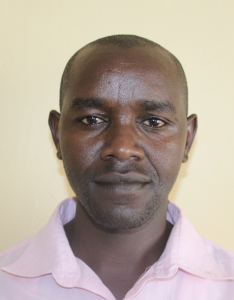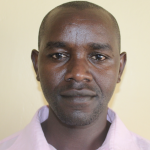Koitabut Secondary School was started in the year 1999 by the community members who came together with ideas of having their own secondary school to accommodate the pupils graduating from their primary school. Looking back on how this school started, it seemed impossible; but gradually as years went by, the image of the school changed with modern buildings raised and more and more students enrolled. Now there are 324 students, 12 teachers, and 10 support staff.
Students, especially the day scholars who have to walk to school, get up very early in the morning. The lessons start at 8:30am and end at 5pm. As for the the boarders who are all girls, the day starts with waking up early in the morning and going to the nearby stream to fetch water for bathing and washing their clothes. After finishing cleanliness, the girls then eat their breakfast and join the rest of the students for the day's activities.
Upon arrival at the school, we were really sad to see the state of water accessibility.
The school only has two plastic tanks that are in bad condition and cannot hold water for long because they leak from the bottom.
"For us to be where we are now, it is only by the grace of God. There has been a water problem for a very long period of time," said Principal Kurgat.
"The two plastic tanks of capacities 5,000 liters each that we bought have not solved our distress of accessing safe water. It is saddening to see students every day going to the stream to fetch unsafe water for their general cleanliness. My heart is burdened with grief for fear of outbreak of waterborne diseases which may be life-threatening to the school at large - especially our students."
When the plastic tanks have some water, it's convenient to retrieve it because they're just a stone's throw from the classrooms. The stream, however, is a bit far and downhill, making it easier to get to but coming back it is very steep - students struggle with their heavy water containers.
"Cases of typhoid have been reported very many times in this area due to drinking contaminated water from unsafe sources available around us," said school cook Philip Kipchumba.
What we can do:
Training
Training on good hygiene habits will be held for two days. The facilitator will use PHAST (participatory hygiene and sanitation transformation), ABCD (asset-based community development), CTC (child to child), lectures, group discussions, and handouts to teach health topics and ways to promote good practices within the school. The CTC method will prepare students to lead other students into healthy habits, as well as kickstart a CTC club for the school.
The training topics will be general hygiene, proper hygiene practices like handwashing with soap, and disposal of garbage. On sanitation, more focus will be on proper human waste disposal, regular cleaning of latrines, and correct use of sanitation facilities.
Handwashing Stations
The school does not have handwashing stations for the students, but only one that belongs to the teachers placed on the ground near the office.
We will deliver two handwashing stations to the school, and the club will fill them with water on a daily basis and make sure there is always a cleaning agent such as soap or ash.
VIP Latrines
The available latrines for the girls are not enough because they have to wait a long time for each other so as to access the facilities. Comparing the population of the girls and the number of latrines available, which are almost full, there is need for decent ones to enable the girl child to stay in school and pursue her education.
Two triple-door latrines will be constructed with local materials that the school will help gather. Three doors will serve the girls while the other three serve the boys. And with a new source of water on school grounds, students and staff should have enough to keep these new latrines clean.
Rainwater Catchment Tank
A 50,000-liter rainwater catchment tank will help alleviate the water crisis at this school. The school will also help gather the needed materials such as sand, rocks, and water for mixing cement. Once finished, this tank can begin catching rainfall that will be used by the school’s students and staff.
We and the school strongly believe that with this assistance, standards will significantly improve. These higher standards will translate to better academic performance!

 Rainwater Catchment
Rainwater Catchment
 Rehabilitation Project
Rehabilitation Project


































